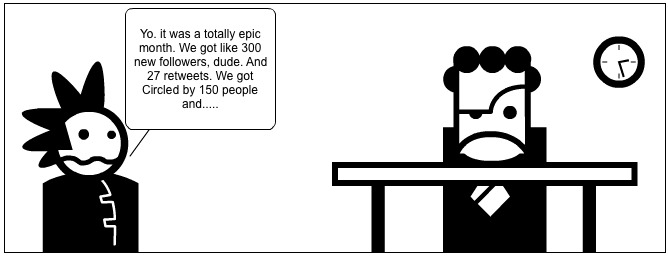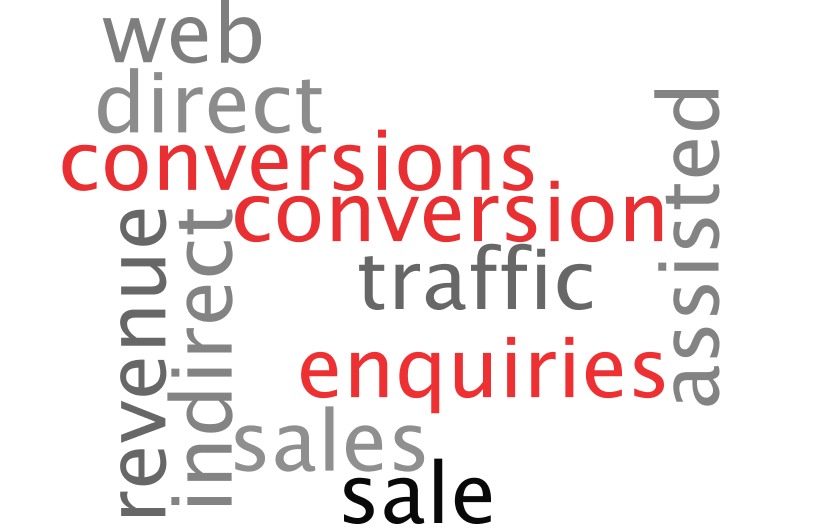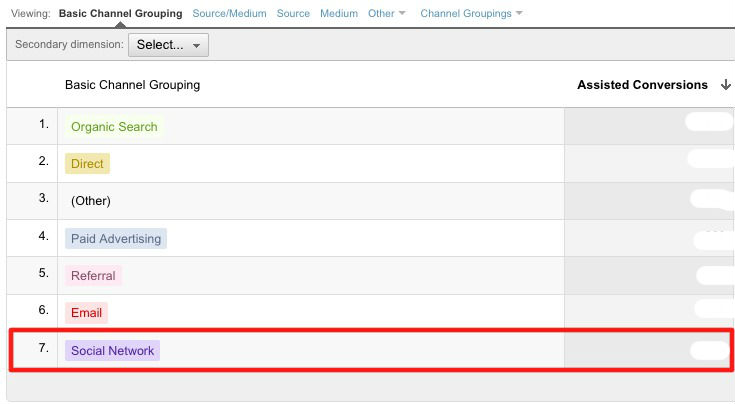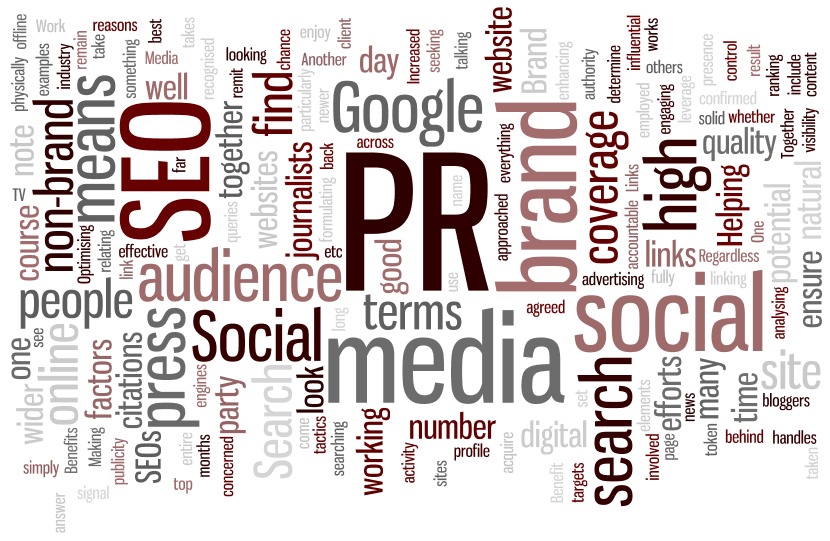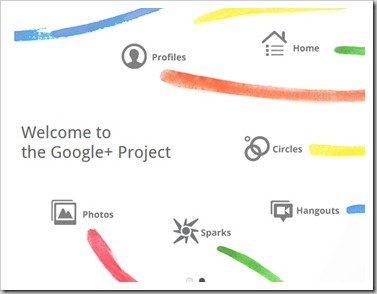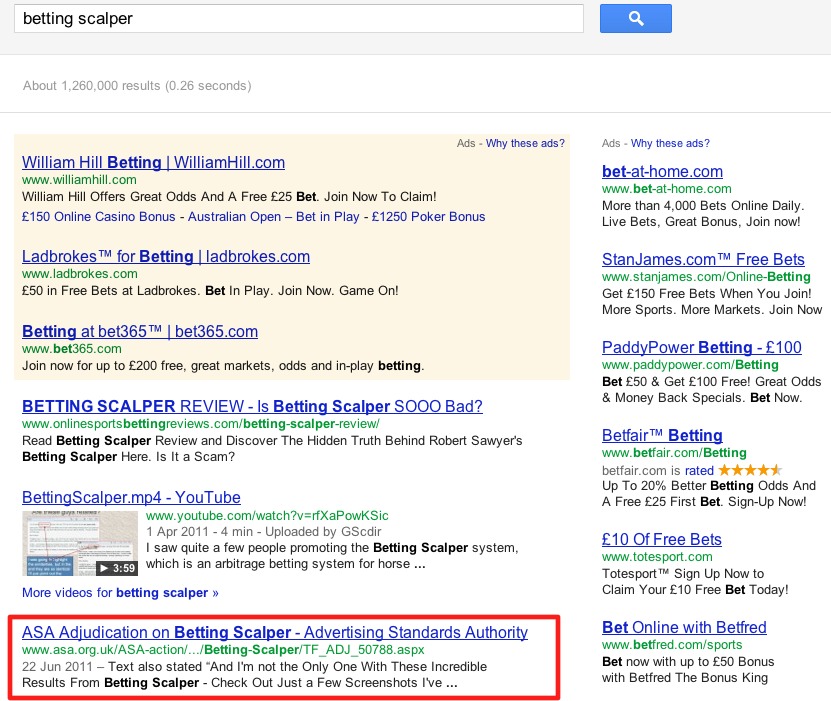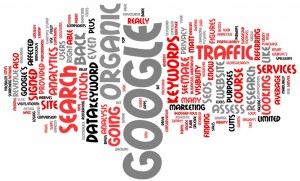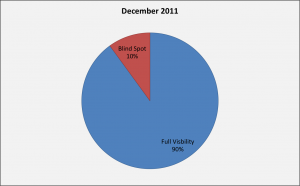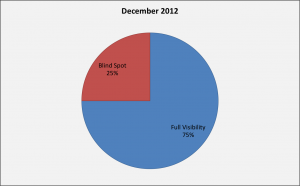Facebook announced Timeline for Brands yesterday. This comes hot on the heels of all personal profiles being moved over to Timeline too (and boy, didn’t people kick up a stink about that!).
Timeline for brands will be mandatory from 30th March 2012, but if you want to get in there early you can move your page over to the new layout anytime from now!
The full rundown of features can be found here but we’ve summarised what we consider to be some of the biggest changes.
Visual Changes
Goodbye vertical banners, hello cover images.
Businesses who’ve been using vertical banner style images as their main page photos will no longer be able to do so… I’m looking at you, Pepsi, Greggs the Bakers and Virgin Holidays.

In all seriousness, though, a lot of brands use this image as a banner, including many we work with.
Under the new Timeline layout, this will not be possible. Instead, you’ll have a square ‘profile image’ and a much larger, more prevalent cover image.
Image dimensions under Timeline are as follows:

Facebook has issued guidelines for cover images, stating they should not be overly promotional or predominantly text.
Goodbye Landing Tabs
Lots of brands are leveraging tabs at the moment, particularly in engaging users who are not yet fans. Tabs enable business page owners to decide what users will see when they land on their Facebook page. They could choose (as many do) to present users with an image, as opposed to a Facebook wall, or an app, as a certain fast food chain does!

With Facebook Timeline for Brands you won’t be able to do this. Of all the changes, this appears to be the one inciting a negative response from brand page owners. Yes, it removes a certain degree of flexibility and if you are a brand using this for marketing, it will be disappointing. But I think the loss of tabs is far outweighed by the improved functionality and some of the newer features
Hello Facebook Business Page Messages!
Finally! Hallelujah, thank the Facebook Overlord. Perhaps the most long overdue feature for business pages is here – well, sort of. Your fans can now send you private messages and you can respond to them. It doesn’t seem, at the moment, as though you can message them first (to be confirmed when we’ve played about a bit more). But nonetheless, the ability for them to contact you privately is excellent. Anyone who has been asked a question on their wall that they don’t feel they should answer in the public domain (customer services requests or account specific information from clients) will be thrilled with this. It’s much more seamless to be able to ask fans to ‘message us’ privately rather than having to refer them off to some generic customer support email address or telephone number.
Pin Status Updates to the Top of Your Page
This is brilliant. You can ‘pin’ certain status updates to the top of your page for up to 1 week. This means any key updates won’t be lost, as they currently are, when newer ones are posted. A really excellent feature, I believe.
Add Milestones
As is already the case on personal pages, Business Pages on the new Facebook Timeline will be able to add historical milestones, e.g. date founded etc. This enables you to provide much more history about your brand without interfering with the current topic material. The Red Bull Facebook page at www.facebook.com/redbull already uses this to great effect.
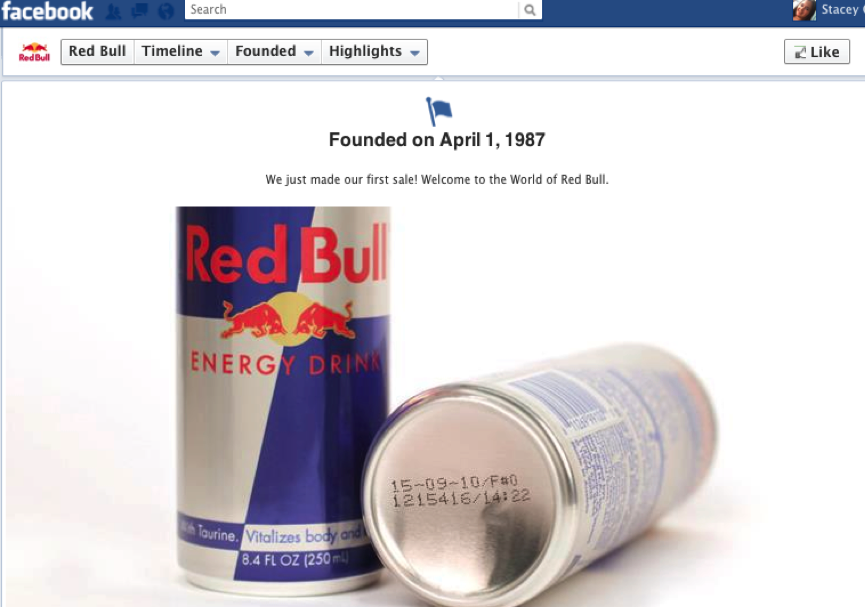
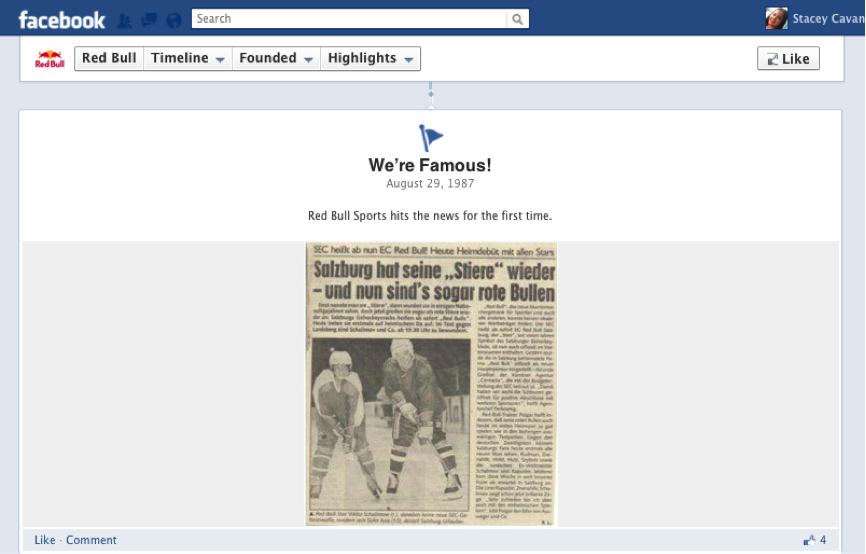
Personally, both as an Internet marketer and as a consumer and Facebook user, I’m looking forward to all businesses adopting Timeline (even if they have to be forced into it at the end of March!).



